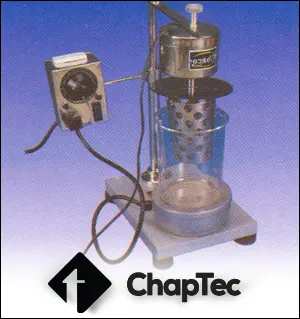Decalcification, an old technique that has its own tricks!
For as long as humans have been doing histology, technicians have wanted to cut all tissue types and they have developed treasures of imagination to achieve what was initially deemed impossible.
Like cutting bone.
This is a very hard tissue that cannot be cut on a normal microtome. Of course tissue can be embedded in methacrylate, a type of resin and cut with a glass knife on a special microtome. But routine clinical labs are rarely equipped with these instruments.
So, techniques were developed to decalcify the tissue, making is soft in order to be able to cut nice sections easily and hand them out to the pathologist for amalysis.
A variety of chemicals have been tested with varying levels of success. Because it often requires pretty harsh chemicals to dissolve the bone, many of these have the potential to destroy components of the tissue, defeating the main purpose of analyzing these same structures.
Strong acids for example decalcify fast, an important factor in clinical labs where the diagnosis is always wanted asap. However, they are the worst for destroying structures. Addition of a complimentary components to prevent this has sometimes been implemented with some success. Hydrochloric acid and Nitric acid are the main representatives of this approach. Weaker acids will also perform adequately however slower. Formic acid is the main one used here and has become one of the most popular choices even though it is often too slow for large bone segments or when the pathologist needs the slide fast.
Chelating agents like EDTA do a great job by not affecting the tissue at all however it is an extremely slow process. For that reason, it is more often used in research than in clinical settings.
Since this is histology, tissues also must be fixed and some people have included formaldehyde in the decalcifying solutions in order to, again, speed up the process by not having to fix it in a separate procedure.
Agitation helps speed up the decalcification process by having the bone constantly in contact with fresher decalcifying solution; you have all seen the overhead motor apparatus inside a fume hood, pitted and eaten away by acid fumes. That is a challenge too! Heat also helps but it also hurts the tissues by destroying fragile tissue components faster.
Also challenging is to determine the endpoint of the process. One does not want to leave tissues longer than required for all that was stated above but how does one determine when it is decalcified completely? Bending, twisting and poking are all used still today with the consequential damage caused to the tissue. These can be unreliable as they rely on subjective tester’s evaluation. There has to be a better way.
So different labs have varying needs and use different approaches that they have tested, validated and are satisfied with. This is why there is not one single please-all solution. And why Chaptec offers so many options!
Probably the most popular is the Gooding & Stewart classic formic acid and formaldehyde formulation or its equivalent by Chaptec Decal-Fx1 while Decal Soft CD is the formic acid only version
Nitric acid formulations are obviously offered starting with the classic Gairns solution and Chaptec own version in Decal Fast. Decal-Fx2 is the nitric acid decalcifier with fixative
People that want to achieve faster results will look to HCL in the Decal-Soft CD. We have added a little EDTA to help protect the tissue from the detrimental effects of harsh chemicals
And we have developed an EDTA version in Decal-Plus which is the product of choice for users wanting to do molecular studies like FISH or IHC and when time is not the determining factor
We finally felt that offering endpoint determination kits (one for EDTA methods and one for acids) was a more scientific way of determining endpoint than mechanical tests. A solution is added to a sample of the final change of decalcifying agent. If calcium is present, a precipitate will form indicating that decalcification is probably incomplete and a longer time in decalcifying agent is required.
Whatever the technique and method you prefer Chaptec can help! Email us to discuss your need and address your challenges.
Q: Why is decalcification necessary?
A: Because calcium makes paraffin sectioning difficult or impossible.
Q: What types of decalcifiers exist?
A: Strong acids (fast but damaging), weak acids (slower, less damaging), and chelating agents like EDTA (very slow but best tissue preservation).
Q: Why do laboratories choose differently?
A: Because each lab balances urgency, tissue preservation needs, and workflow realities.
Q: What does Chaptec offer?
A: Multiple decalcifiers with different properties, plus chemical end-point kits.
| 470, avenue Laurendeau, Montréal-Est (Quebec) H1B 5M2 | |||
| Phone: | 514 498-3620 | Toll free: | 833 498-3620 |
| Email: | chaptec@chaptec.com | ||


